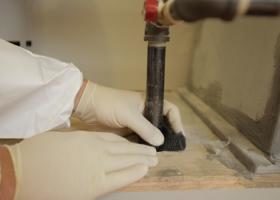Weatherization Plus Health: Future Direction of the Weatherization Assistance Program?

The future of the U.S. Department of Energy’s low-income Weatherization Assistance Program (WAP) is far from certain. The program faced much criticism after receiving $5 billion in American Recovery and Reinvestment Act funds, despite being one of the best job producers, with 15,000 jobs at its peak, and weatherizing 100,000 more homes than originally projected. This negative perception persists. With the dire fiscal situation in Washington, D.C., steady funding and political popularity appear out of reach, begging the question: Where does WAP go from here? Although WAP has continually evolved in its 35-year history to become a state-of-the-art, diagnostically driven program and has led the way for the technology and emerging standards of the entire home performance industry, the program must remain forward thinking to be a priority in this political environment. One way ahead is to incorporate healthy homes measures into normal weatherization work.
The long-standing benefits of the program are obvious. It is a historically successful and cost-effective investment in the American workforce and for low-income families nationwide. It is the largest residential energy efficiency program in the nation and performs a vital role in successfully reducing the burden of high energy prices on low-income families while providing well-paying jobs, reducing the nation’s dependence on foreign oil and decreasing carbon emissions. These achievements should continue. The question then becomes: What can the WAP network do to maintain these vital services and advance its mission in America’s communities?
WAP has been at the forefront of one logical progression: the program is the link between energy efficiency and healthy homes. Americans spend 90% of their time indoors, much of it in their homes. Significant research has shown that a healthy indoor environment is imperative for general health, well-being, and comfort. Conversely, substandard conditions can cause serious health problems, such as childhood lead poisoning and asthma, and exacerbate the risk of problems related to electrical safety, pests and rodents, mold and moisture, and other indoor air-quality issues. WAP practitioners are already in many of the nation’s neediest homes and already address a number of the health and safety problems related to energy efficiency retrofits. It makes sense to expand WAP services to consider additional healthy homes improvements while we are already there. Although WAP saves money for homeowners through reduced energy bills, a focus on healthy homes services has additional economic benefits and can prevent hefty medical bills and wages lost to illness, as well as avoid emergency room visits for children due to asthma and other health ailments, making a huge impact on the billions of dollars expended each year for those costs.
[[{"fid":"656","view_mode":"default","fields":{"format":"default","field_file_image_alt_text[und][0][value]":"Tip of lead test swab is pink","field_file_image_title_text[und][0][value]":"","field_folder[und]":"823"},"type":"media","link_text":null,"attributes":{"height":"259","width":"448","style":"width: 448px; height: 259px; float: left; margin-left: 5px; margin-right: 5px;","class":"media-element file-default"}}]]Currently, analysts are examining the costs and benefits of traditional weatherization as well as augmented Weatherization Plus Health measures and strategies. WAP has proven its significant energy benefits throughout its history and continually fine-tunes standards and techniques to achieve better savings and more cost-effective efficiency installations. The expanded WAP would be evaluated by the metrics of both energy savings and reduced health care costs, further cementing the importance of the WAP, while providing numerous high-tech building performance jobs in our nation’s communities.
With considerable overlap between households eligible for WAP services and the 6 million American households with moderate to severe physical housing problems, the opportunity is clear. States and local agencies have already started to expand their roles and energy audits to take additional health and safety issues into consideration and provide the best possible suite of services while stretching every dollar.
WAP’s focus will remain on energy efficiency, so new models of funding and new home remediation strategies are critical to the vision of its future (see the accompanying article on STEP, Inc., for an innovative funding source to blend programs and integrate services). The Weatherization Plus Health initiative, implemented by the National Association for State Community Services Programs (NASCSP) on behalf of the Department of Energy, seeks to establish a link between WAP and healthy homes programs nationwide, ensuring that homes served by these programs are safer, healthier, and more energy efficient by bridging the gap between these complementary services. As such, NASCSP is unveiling a website chock full of resources to assist in the identification of potential partners, best practices for reaching out to other programs, and funding sources that state and local WAP managers may not have considered before.
WAP’s mission is to reduce energy costs for low-income families—particularly for those most vulnerable: the elderly, people with disabilities, and families with children—by improving the energy efficiency of their homes while ensuring their health and safety. The WAP network looks to maintain this mission, but also to continue to develop both broader markets and more comprehensive services. The Weatherization Plus Health initiative is one direction WAP can progress creatively beyond the traditional boundaries of the program and help leverage funds and resources to serve America’s communities more comprehensively. It can also be a part of the program’s continuing evolution to remain a vital component of the energy efficiency of the nation’s housing stock and the health of its citizens.

